Ditapis dengan
E-book A Holter for Parkinson’s Disease Motor Symptoms : STAT-On
Parkinson’s disease (PD) is the second most frequent neurodegenerative disorder, with approximately 6.1 million people who live with PD in 2016 worldwide [1]. For several reasons that are not yet fully understood, the prevalence and incidence are expected to increase in the next years. According to the World Health Organization, globally, disability and death due to PD …
- Edisi
- -
- ISBN/ISSN
- 9781032632865
- Deskripsi Fisik
- 269 hlm
- Judul Seri
- -
- No. Panggil
- 610 AVI a
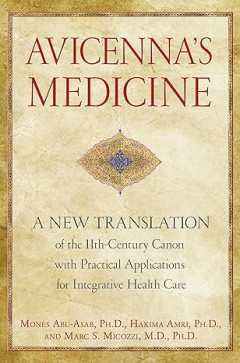
E-book Avicenna's Medicine: A New Translation of the 11th-Century Canon with …
The first contemporary translation of the 1,000-year-old text at the foundation of modern medicine and biology • Presents the actual words of Avicenna translated directly from the original Arabic, removing the inaccuracies and errors of most translators • Explains current medical interpretations and ways to apply Avicenna’s concepts today, particularly for individualized medicine …
- Edisi
- -
- ISBN/ISSN
- 9781594774324
- Deskripsi Fisik
- 498 halaman, ilus.
- Judul Seri
- -
- No. Panggil
- 610.01 ABU a
E-book Stem Cell Transplantations Between Siblings as Social Phenomena : The …
Questions concerning the ethical status of children, and their position and their relationships within families, have been widely debated in recent moral philosophy and biomedical ethics, as well as in pedagogic sciences and sociology. This volume is intended to contribute to these interdisciplinary debates from a very specific angle. Combining philosophical, ethical and q…
- Edisi
- -
- ISBN/ISSN
- 9783031041662
- Deskripsi Fisik
- 276 hlm
- Judul Seri
- -
- No. Panggil
- 610.1 ECA s
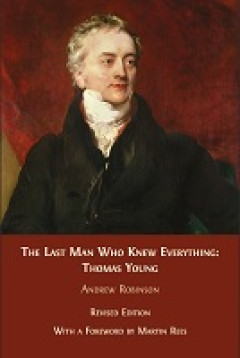
E-book The Last Man Who Knew Everything
No one has given the polymath Thomas Young (1773–1829) the all-round examination he so richly deserves—until now. Celebrated biographer Andrew Robinson portrays a man who solved mystery after mystery in the face of ridicule and rejection, and never sought fame. As a physicist, Young challenged the theories of Isaac Newton and proved that light is a wave. As a physician, he showed how the ey…
- Edisi
- -
- ISBN/ISSN
- 9781805110187
- Deskripsi Fisik
- 298 halaman, ilus.
- Judul Seri
- -
- No. Panggil
- 920.71 ROB t
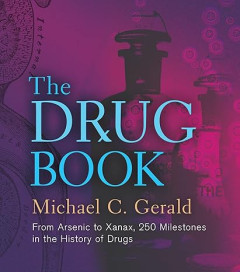
E-book The Drug Book: From Arsenic to Xanax, 250 Milestones in the History of…
Throughout history, humans everywhere have searched for remedies to heal our bodies and minds. Covering everything from ancient herbs to cutting-edge chemicals, this book in the hugely popular Milestones series looks at 250 of the most important moments in the development of life-altering, life-saving, and sometimes life-endangering pharmaceuticals. Illustrated entries feature ancient drugs lik…
- Edisi
- -
- ISBN/ISSN
- 9781402792328
- Deskripsi Fisik
- 652 halaman, ilus.
- Judul Seri
- -
- No. Panggil
- 615.109 GER t
E-book The Medical Book: From Witch Doctors to Robot Surgeons, 250 Milestones…
Following his hugely successful The Math Book and The Physics Book, Clifford Pickover now chronicles the advancement of medicine in 250 entertaining, illustrated landmark events. Touching on such diverse subspecialties as genetics, pharmacology, neurology, sexology, and immunology, Pickover intersperses “obvious” historical milestones--the Hippocratic Oath, general anesthesia, the Human Gen…
- Edisi
- -
- ISBN/ISSN
- 9781402792335
- Deskripsi Fisik
- 567 halaman
- Judul Seri
- -
- No. Panggil
- 610.9 PIC t
E-book Misery to Mirth : Recovery from Illness in Early Modern England
The history of early modern medicine often makes for depressing reading. It implies that people fell ill, took ineffective remedies, and died. A few snippets from Roy and Dorothy Porter’s classic study, In Sickness and in Health, encapsulate this pes-simism: they speak of the ‘universal sickness, suffering, and woe’ of the early mod-ern past, a time in which ‘people died like f…
- Edisi
- -
- ISBN/ISSN
- 9780198779025
- Deskripsi Fisik
- 287 hlm
- Judul Seri
- -
- No. Panggil
- 610 NEW m
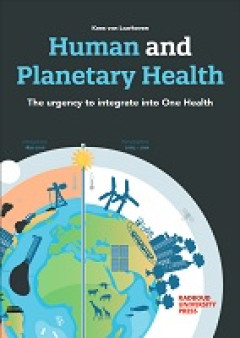
E-book Human and Planetary Health: The Urgency to Integrate into One Health
In his professional journey, travelling through an upcoming field of surgery with apparently unlimited possibilities, Kees van Laarhoven witnessed major milestones and breakthroughs. Already as a medical student, he was amazed by surgical courage. During residency, he experienced hard work, diligence and perseverance of surgical professionals. Today as a surgeon with over 25 years of clinical e…
- Edisi
- -
- ISBN/ISSN
- 9789493296169
- Deskripsi Fisik
- 194 halaman, ilus.
- Judul Seri
- -
- No. Panggil
- 614 IAA h
E-book Civic Medicine : Physician, Polity, and Pen in Early Modern Europe
Communities great and small across Europe for eight centuries have contracted with doctors. Physicians provided citizen care, helped govern, and often led in public life. Civic Medicine stakes out this timely subject by focusing on its golden age, when cities rivaled territorial states in local and global Europe and when civic doctors were central to the rise of shared, organized written inform…
- Edisi
- -
- ISBN/ISSN
- 9781315554693
- Deskripsi Fisik
- 333 hlm
- Judul Seri
- -
- No. Panggil
- 610.1 GIA c
E-book The Cambridge Illustrated History of Medicine
- Edisi
- -
- ISBN/ISSN
- 9780521442117
- Deskripsi Fisik
- 400 halaman, ilus.
- Judul Seri
- -
- No. Panggil
- 610 POR t
- Edisi
- -
- ISBN/ISSN
- 9780521442117
- Deskripsi Fisik
- 400 halaman, ilus.
- Judul Seri
- -
- No. Panggil
- 610 POR t

E-book Surgery: An Illustrated History
Designed like a fine art book, this beautiful work by the foremost American historian of surgery represents the finest pictorial record of the history of surgery ever assembled between two covers. Writing from a surgeon' perspective, Dr. Rutkow traces the development of surgery from its crude beginnings, from a primitive craft to one of modern society's most accomplished achievements. Brief bio…
- Edisi
- -
- ISBN/ISSN
- 9780801660785
- Deskripsi Fisik
- 564 halaman, ilus.
- Judul Seri
- -
- No. Panggil
- 617 RUT s
E-book Gene Drives at Tipping Points : Precautionary Technology Assessment an…
In recent years, innovation in genetic engineering brought forth a number of tech-nologies to manipulate the fate of entire wild type populations. These technologiesrely on the dissemination of synthetic genetic elements within a population of sex-ually reproducing species via the germline and are identified as Self-PropagatingArtificial Genetic Elements (SPAGE). Some secure their dissemination…
- Edisi
- -
- ISBN/ISSN
- 9783030389345
- Deskripsi Fisik
- 264 hlm
- Judul Seri
- -
- No. Panggil
- 616.98 BRE g
E-book The Practice of Sheep Veterinary Medicine
There is a general perception amongst veterinary students and sheep producers that there are limited opportunities for a ‘sheep vet’ because individual sheep are generally of low value and the cost of veterinary involvement is too high. It is quite true that the value of individual sheep in commercial flocks is generally too low for sheep diseases with a low incidence to attr…
- Edisi
- -
- ISBN/ISSN
- 9781925261783
- Deskripsi Fisik
- 614 hlm
- Judul Seri
- -
- No. Panggil
- 636.089 ABB t

E-book Imagining Chinese Medicine
While at medical school in north China during the sec-ond Sino-Japanese war (1936–45), Professor Ma chose to specialise in traditional medicine. As a medical graduate in revolutionary China, he was then allocated a position teaching physiology in Peking Medical College (Beiyi Xueyuan ????), which allowed him ample time for reading the medical classics, a pursuit that he found suited him bette…
- Edisi
- -
- ISBN/ISSN
- 9789004366183
- Deskripsi Fisik
- 542 hlm
- Judul Seri
- -
- No. Panggil
- 610.51 BAK i
E-book Prescription for the People : An Activist’s Guide to Making Medicine…
The high cost of essential medicines is a big problem. Recently, here in the United States where Ilive, social media and even lawmakers exploded in anger over a 400percent-plus increase in the lifesaving allergy medicine EpiPen. Similar outrage occurred when a young pharmaceutical corpora-tion chief executive officer (CEO) increased the price of a critical toxo-plasmosis drug by m…
- Edisi
- -
- ISBN/ISSN
- 9781501713910
- Deskripsi Fisik
- 260 hlm
- Judul Seri
- -
- No. Panggil
- 615.1 QUI p
E-book Medicine and Memory in Tibet : Amchi Physicians in an Age of Reform
Under a clear autumn sky, Amchi Yonten Tsering and I were chat-ting in his Shigatse courtyard in the morning sun when the first patient of the day knocked on the front door. An elderly monk was let inside, accompanied by a younger colleague. We exchanged a few words and found out they were from nearby Tashilhunpo Monastery, the seat of the reincarnated line of the Panc…
- Edisi
- -
- ISBN/ISSN
- 9780295743004
- Deskripsi Fisik
- 308 hlm
- Judul Seri
- -
- No. Panggil
- 610 HOF m
E-book Mixing Medicines : The Global Drug Trade and Early Modern Russia
The paradox of early modern Russian medical records is that we haveboth notable survivals and problematic absences. In particular for theseventeenth century, we have sometimes day-by-day accounts of the spe-cific medicaments prescribed to the tsar, a kind of detailed elite pharma-cy record that has rarely survived in other locations. We also have lists ofimports, inventories…
- Edisi
- -
- ISBN/ISSN
- 9780228012832
- Deskripsi Fisik
- 248 hlm
- Judul Seri
- -
- No. Panggil
- 610 GRI m

E-book A Literary History of Medicine, Volume 3-2: Annotated English Translat…
A Literary History of Medicine by the Syrian physician Ibn Ab? U?aybi?ah (d. 1270) is the earliest comprehensive history of medicine. It contains biographies of over 432 physicians, ranging from the ancient Greeks to the author’s contemporaries, describing their training and practice, often as court physicians, and listing their medical works; all this interlaced with poems and anecdotes. The…
- Edisi
- -
- ISBN/ISSN
- 9789004545601
- Deskripsi Fisik
- 848 halaman, ilus.
- Judul Seri
- -
- No. Panggil
- 610.1 GEL a 002814-eB-0122
E-book Handbook of Pharmaceutical Excipients
Aqueous solutions are subject to bacterial or enzymatic degradation but may be preserved by initially boiling the solution for a short time to inactivate any enzymes present; microwave irradiation can also be used. Aqueous solutions may also be preserved by the addition of an antimicrobial preservative such as 0.1% w/v benzoic acid, 0.1% w/v sodium benzoate, or a mixture of 0.17% w/v methylpara…
- Edisi
- -
- ISBN/ISSN
- -
- Deskripsi Fisik
- 917 hlm
- Judul Seri
- -
- No. Panggil
- 615.1 ROW h
E-book Strange Blood : The Rise and Fall of Lamb Blood Transfusion in 19th Ce…
The experience of a small-town German doctor would, in the mid-1870s, starta formidable transfusion craze. Oscar Hasse of Nordhausen am Harz triedtransfusion with lamb blood on fifteen patients, reported positive results inmeetings and publications, and suddenly hundreds of lamb blood transfu-sions were made in clinics, hospitals and lunatic asylums across Europe andthe USA. ‘The blood of lam…
- Edisi
- -
- ISBN/ISSN
- 9783839451632
- Deskripsi Fisik
- 217 hlm
- Judul Seri
- -
- No. Panggil
- 610 BER s
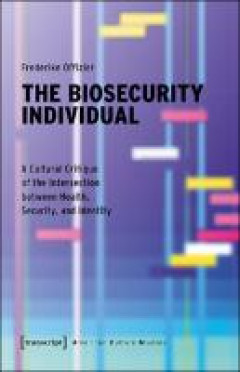
E-Book The Biosecurity Individual: A Cultural Critique of the Intersection be…
Discoveries in biomedicine and biotechnology, especially in diagnostics, have made prevention and (self)surveillance increasingly important in the context of health practices. Frederike Offizier offers a cultural critique of the intersection between health, security and identity, and explores how the focus on risk and security changes our understanding of health and transforms our relationship …
- Edisi
- -
- ISBN/ISSN
- 9783839471456
- Deskripsi Fisik
- 294 halaman
- Judul Seri
- -
- No. Panggil
- 616.98 OFF t

E-Book Progress and Pathology: Medicine and Culture in the Nineteenth Century
This collaborative volume explores changing perceptions of health and disease in the context of the burgeoning global modernities of the long nineteenth century. During this period, popular and medical understandings of the mind and body were challenged, modified, and reframed by the politics and structures of ‘modern life’, understood in industrial, social, commercial, and technological te…
- Edisi
- -
- ISBN/ISSN
- 9781526147547
- Deskripsi Fisik
- 389 halaman
- Judul Seri
- -
- No. Panggil
- 362.1068 DIC p
E-book Oxford Handbook of Clinical Medicine
This is the fi rst edition of the book without either of the original authors—Tony Hope and Murray Longmore. Both have now moved on to do other things, and enjoy a well-earned rest from authorship. In this book, I am joined by a Nephrologist, Gastroenterologist, and trainees destined for careers in Cardiology, Dermatology, and General Practice. Five physicians, each with very diff erent inter…
- Edisi
- 10th ed.
- ISBN/ISSN
- -
- Deskripsi Fisik
- 911 hlm
- Judul Seri
- -
- No. Panggil
- 610.1 WIL o
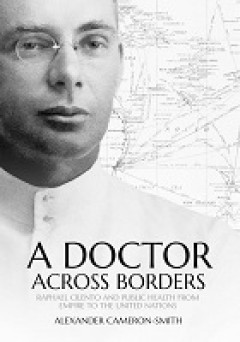
E-Book A Doctor Across Borders: Raphael Cilento and Public Health from Empire…
In his day, Raphael Cilento was one of the most prominent and controversial figures in Australian medicine. As a senior medical officer in the Commonwealth and Queensland governments, he was an active participant in public health reform during the inter-war years and is best known for his vocal engagement with public discourse on the relationship between hygiene, race and Australian nationhood.…
- Edisi
- -
- ISBN/ISSN
- 9781760462642
- Deskripsi Fisik
- 326 halaman
- Judul Seri
- -
- No. Panggil
- 610.734 CAM a

E-Book Medicine in an Age of Revolution
This work is the first major attempt since the 1970s to challenge the idea that the essential engine of medical (and scientific) change in seventeenth-century Britain emanated from puritanism. It seeks to reaffirm the crucial role of the period of the civil wars and their aftermath in providing the most congenial context for a re-evaluation of traditional attitudes to medicine. In the process, …
- Edisi
- -
- ISBN/ISSN
- 9780198853985
- Deskripsi Fisik
- 471 halaman
- Judul Seri
- -
- No. Panggil
- 610.1 ELM m
E-book Bioethics and the Holocaust : A Comprehensive Study in How the Holocau…
A personal word: many years ago, when we were first developing the United StatesHolocaust Memorial Museum, we struggled with the issue of how to end the perma-nent exhibit. We had come up with an appropriate beginning that would serve thefunction of taking visitors off the National Mall, taking them back what was thenfifty years in time, moving them a continent away and introducing them to a Eu…
- Edisi
- -
- ISBN/ISSN
- 9783031019876
- Deskripsi Fisik
- 326 hlm
- Judul Seri
- -
- No. Panggil
- 614 BER b
E-book Healing with Poisons : Potent Medicines in Medieval China
In this all-encompassing pharmacy, poisons loomed large. Tis might seem surprising given that today Chinese herbal remedies are widely imag-ined to be natural, mild, and safe, especially in comparison with the synthetic drugs of modern biomedicine, which are ofen perceived as artifcial, exceed-ingly strong, and with therapeutic efects inseparable from dangerous side efects. Another familiar dic…
- Edisi
- -
- ISBN/ISSN
- 9780295749013
- Deskripsi Fisik
- 278 hlm
- Judul Seri
- -
- No. Panggil
- 582.12 LIU h
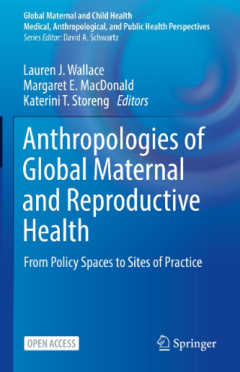
E-book Anthropologies of Global Maternal and Reproductive Health: From Policy…
This open access edited book brings together new research on the mechanisms by which maternal and reproductive health policies are formed and implemented in diverse locales around the world, from global policy spaces to sites of practice. The authors – both internationally respected anthropologists and new voices – demonstrate the value of ethnography and the utility of reproduction as a le…
- Edisi
- -
- ISBN/ISSN
- 9783030845148
- Deskripsi Fisik
- 225 hlm
- Judul Seri
- -
- No. Panggil
- 362.1 WAL a
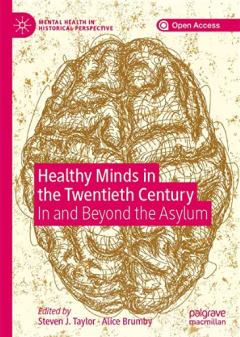
E-book Healthy Minds in the Twentieth Century : In and Beyond the Asylum
This open access edited collection contributes a new dimension to the study of mental health and psychiatry in the twentieth century. It takes the present literature beyond the ‘asylum and after’ paradigm to explore the multitude of spaces that have been permeated by concerns about mental well-being and illness. The chapters in this volume consciously attempt to break down institutional wal…
- Edisi
- -
- ISBN/ISSN
- 9783030272753
- Deskripsi Fisik
- xiii, 274 hlm. : ill.
- Judul Seri
- -
- No. Panggil
- 362.1 TAY h

E-book Hippocrates Now
“We need to talk about Hippocrates. Current scholarship attributes none of the works of the ‘Hippocratic corpus’ to him, and the ancient biographical traditions of his life are not only late, but also written for their own promotional purposes. Yet Hippocrates features powerfully in our assumptions about ancient medicine, and our beliefs about what medicine – and the physician himself �…
- Edisi
- -
- ISBN/ISSN
- 9781350005907
- Deskripsi Fisik
- 262 hlm
- Judul Seri
- -
- No. Panggil
- 610.938 KIN h
E-book Movement of knowledge : Medical humanities perspectives on medicine, s…
edical knowledge is always in motion. It moves from the lab to the office, from a press release to a patient, from an academic journal to a civil servant’s desk and then on to a policymaker. Knowledge is deconstructed, reconstructed, and transformed as it moves. The dynamic, ever-evolving nature of medical knowledge has given rise to different concepts to explain it: diffusion, translation, c…
- Edisi
- -
- ISBN/ISSN
- 9789188909367
- Deskripsi Fisik
- -
- Judul Seri
- -
- No. Panggil
- 610.1 TUN m
E-book The Life of Breath in Literature, Culture and Medicine Classical to C…
This open access book studies breath and breathing in literature and culture and provides crucial insights into the history of medicine, health and the emotions, the foundations of beliefs concerning body, spirit and world, the connections between breath and creativity and the phenomenology of breath and breathlessness. Contributions span the classical, medieval, early modern, Romantic, Victori…
- Edisi
- -
- ISBN/ISSN
- 2634-6443
- Deskripsi Fisik
- 558 hlm
- Judul Seri
- -
- No. Panggil
- 902 ADE t
E-book Ear, Nose and Throat : The Official Handbook for Medical Students and …
Ear Nose and Throat (ENT) surgery or Otorhinolaryngology offers an exciting and varied surgical career option. It has been described as a ‘cradle to grave’ specialty with a caseload ranging from a baby with hearing loss, teenager with allergic rhinitis to an elderly man with throat cancer. As there is no separate medical companion, ENT surgeons also manage the non-surgical care of their pat…
- Edisi
- -
- ISBN/ISSN
- -
- Deskripsi Fisik
- 264 hlm
- Judul Seri
- -
- No. Panggil
- 610 DOS e
 Karya Umum
Karya Umum  Filsafat
Filsafat  Agama
Agama  Ilmu-ilmu Sosial
Ilmu-ilmu Sosial  Bahasa
Bahasa  Ilmu-ilmu Murni
Ilmu-ilmu Murni  Ilmu-ilmu Terapan
Ilmu-ilmu Terapan  Kesenian, Hiburan, dan Olahraga
Kesenian, Hiburan, dan Olahraga  Kesusastraan
Kesusastraan  Geografi dan Sejarah
Geografi dan Sejarah